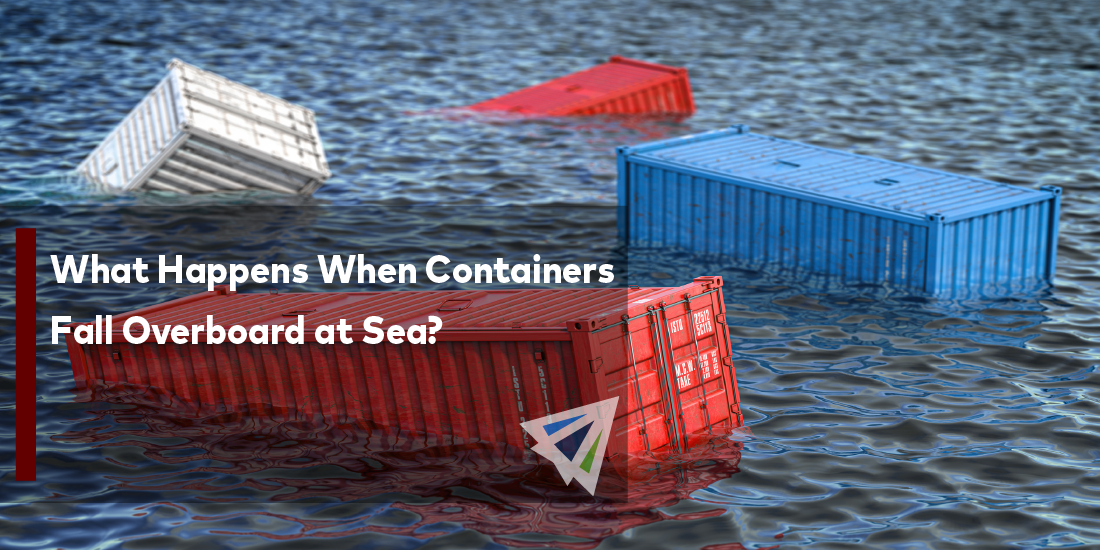If you’ve worked in the logistics industry for any amount of time, chances are you’ve heard a few stories of container losses. Whether it be the anecdotal tale from an unlucky shipper who lost their cargo among a few containers going overboard at sea, or the mass-scale cargo losses caused by unruly weather, failing equipment, and sinking ships – while rare, they’re scary realities.
For most of us, we tend to only think of the financial and logistical implications of container losses, but rarely consider the degree of damage and risk that such instances create beyond supply chain implications. Container ship incidents that result in cargo loss often create dangerous conditions for the crew aboard a ship, the wildlife in surrounding areas, and litter the seas and coastlines with debris and toxic materials.
While there are countless instances of a few containers unluckily toppling off of a ship, there are also many stories of entire sunk ships and catastrophic shipping container losses that have contributed to the destruction and loss of tens of thousands of containers throughout the years.
When the MOS Comfort sank in the Indian Ocean in 2013 (one of the largest container ships ever sunk), it was responsible for a loss of 4,293 containers. Luckily, the incident resulted in no human casualties, but the littering impact from such a major loss is near immeasurable.
Why Do Container Losses Happen?
Shippers often wonder how such massive tragedies occur, and unfortunately, there’s no simple answer. It’s rare these days that a catastrophic container loss or sunk ship can ever be attributed to a single factor. It’s usually a combination of weather, ship design, propulsion issues, and how the shipping containers are braced aboard the vessel, among other things.
In addition, as equipment gets older, the structural integrity changes in ways that are difficult to measure or predict. Despite their metal construction, containers that are constantly consolidated, deconsolidated, stacked, lifted, and transported suffer from some degree of structural integrity fatigue as the metal wears down.
It’s not uncommon that containers are incorrectly loaded, stacked, and braced aboard a ship. In fact, there are likely countless sailings that have occurred with incorrectly lashed together containers, but it’s only the unluckiest circumstances that reveal these mistakes through a significant loss of cargo.
The thing about container losses is that they’re rarely pretty. While the occasional container may fall gracefully off the top of a stack into the ocean, it’s often an incredibly hazardous incident.
Danger For Crew
Container ships frequently carry hazardous goods on board. Containerized and enclosed, these substances are hardly a threat, but when storms and unruly seas cause containers to topple aboard a ship, the impact force of cargo clashing together can cause even the toughest enclosures to rupture and spill on board. It’s not only the direct exposure to the hazardous materials that causes risk, but the combination of combustible substances, or ones that create dangerous gaseous fumes upon contact with one another.
In the midst of a container domino effect, there’s no way of knowing or controlling what substances leak and mix with each other, which creates an incredibly dangerous situation for workers.
Danger to Wildlife
The debris from a container ship failure can stretch dozens of miles, and the impact is often immeasurable. After sunk ships or major container losses, empty containers and debris are commonly discovered for years to come stretching miles and miles across coastlines near affected areas.
This creates several hazards for wildlife. The foam and packing materials used to protect cargo spill into the ocean and are mistaken for food by fish and other sea creatures. Bags, nets, and other materials that appear interesting to animals can trap and suffocate them. Along coastlines during cleanup projects, workers have found bite marks in chunks of plastic and Styrofoam, indicating an interest in and attempt to eat the materials by wolves and bears.
Who Cleans Up, and How?
From a financial and logistical standpoint, these container loss events are often just written off as “losses” by the parties involved in the shipping of the cargo. However, the litter from container losses creates very real problems for surrounding communities and businesses. When the Hanjin Seattle’s containers were lost, residents in Western Vancouver island suffered from the impact it had on their terrain.
Identifying who’s at fault for the initial container loss rarely has an immediate impact on salvaging the damage caused from the instance. It’s often due to the help from countless volunteers and government action that debris is slowly cleared following a mass container loss incident.
The Vancouver incident resulted in volunteers collecting between 20 to 30 tons of plastic and foam to be hauled out via helicopter from the coastlines. However, cleaning the wreckage entirely is impossible, as foam breaks down into billions of millimeter-sized balls that mix with soil and become irretrievable.
While everyone does their best to contribute to the cleanup and restoration of affected areas, container loss events are tragic and have very real impacts on the livelihood of residents, businesses, and animals both at sea and on land. Carriers continue to improve their sensors, equipment, and predictive analysis for weather to avoid such events, but each incident seems to bring additional factors into play that weren’t previously considered.
